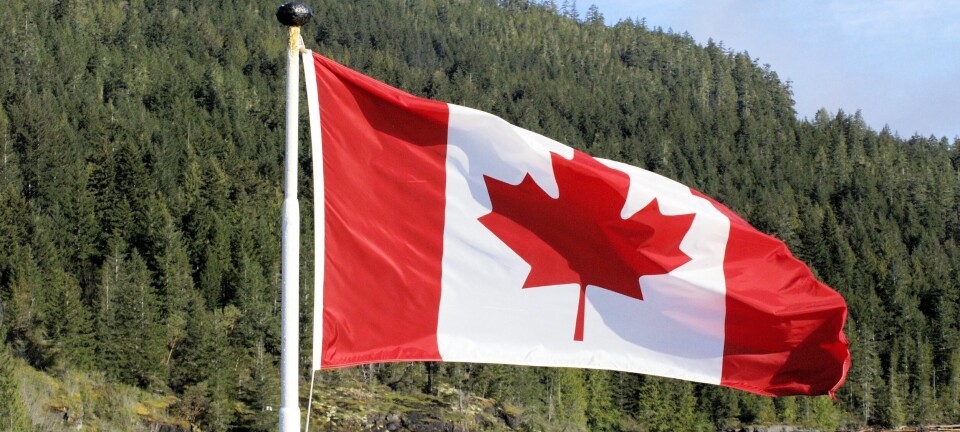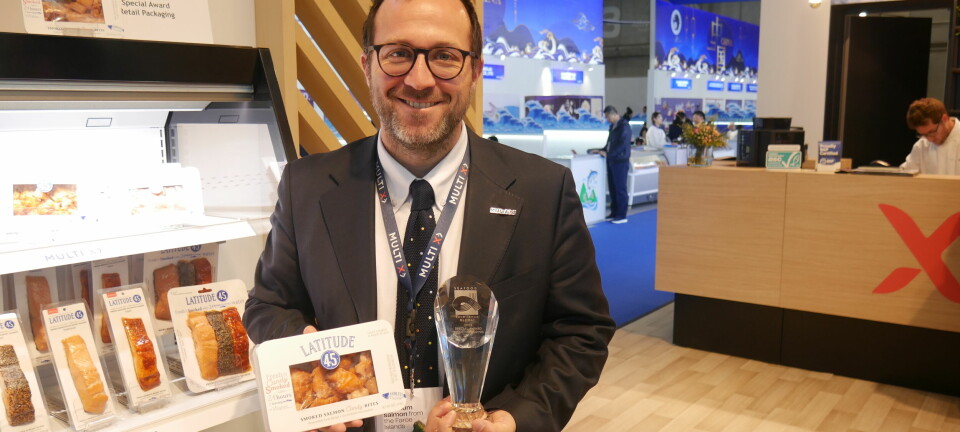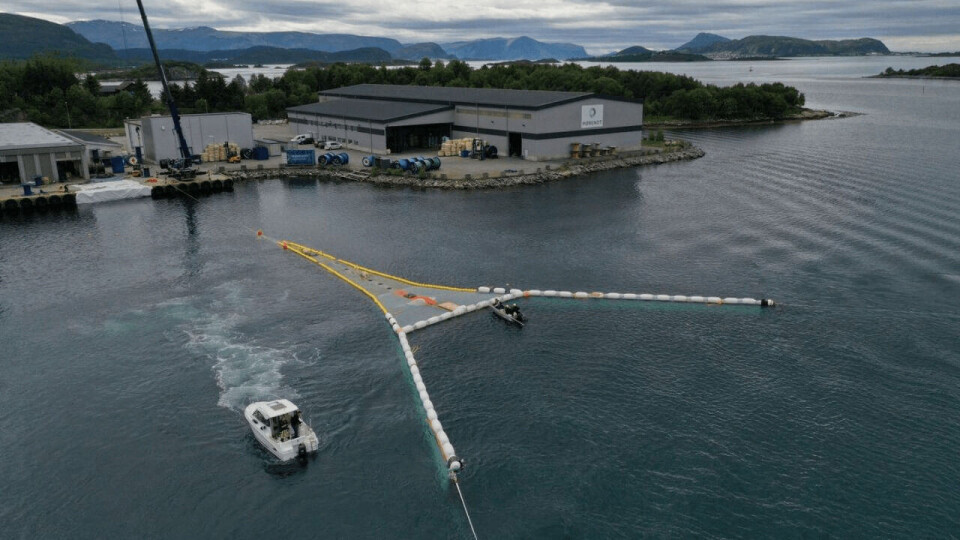
Mørenot helps bid to net ocean plastic
Aquaculture and fishing net maker Mørenot has played a central role in design, production, and testing of a system to help rid the world’s oceans of floating plastic pollution.
Non-profit organisation The Ocean Cleanup brought Mørenot on board for help developing its System 002, a wide funnel that is towed by two boats and is designed to channel the plastic into a collection net, or “retention system”, the size of a single-decker bus.
Mørenot has delivered the retention system, which will be regularly emptied onto an accompanying cargo vessel that takes the plastic to land for recycling into products that The Ocean Cleanup can sell to fund its operations.
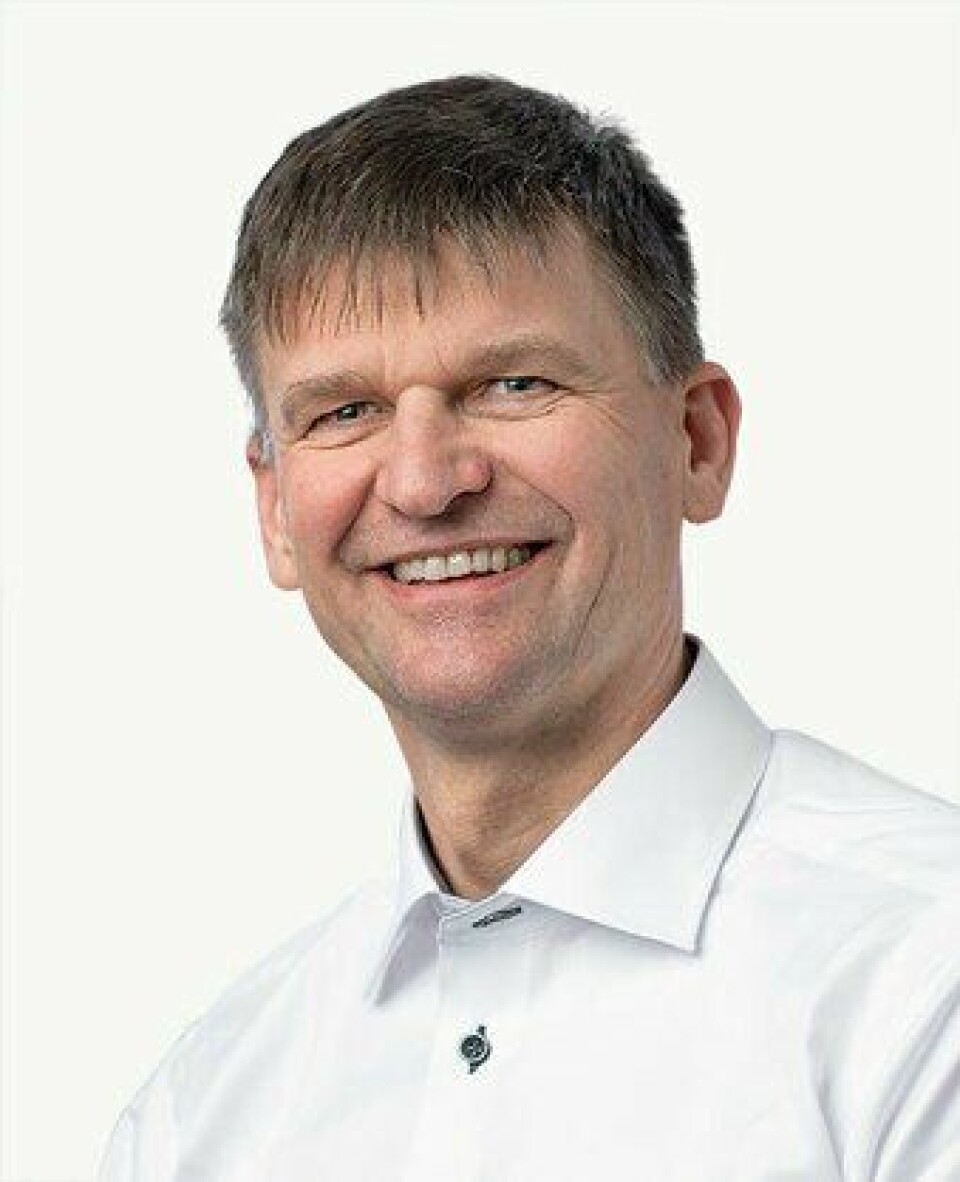
A football field in 15 seconds
The Ocean Cleanup expects to deploy the first System 002 in the Great Pacific Garbage Patch, a collection of marine debris in the North Pacific Ocean, next month.
If everything works as planned, the System 002 will be able to clean up an area the size of a football field every 15 seconds.
“We are incredibly proud that Norwegian technology and competence plays an important part in the world’s largest ocean clean-up,” said Mørenot chief executive Arne Birkeland in a press release.
“This is an unusual project where we worked in close collaboration with a highly competent team from The Ocean Cleanup, and we were truly able to make use of our solutions and competencies from our long history as a supplier to the fisheries and aquaculture industry.”
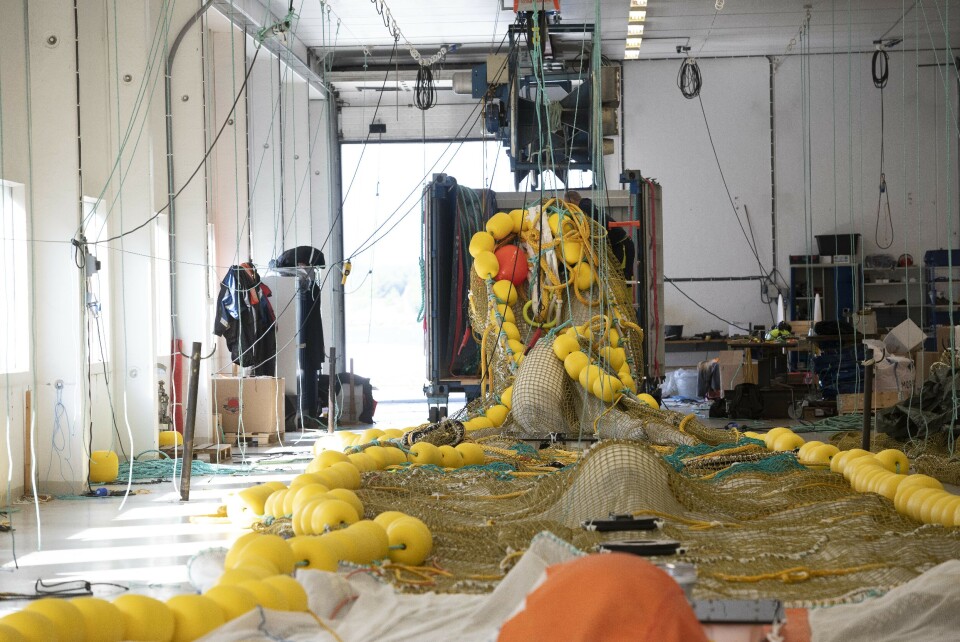
Huge fleet required
The Ocean Cleanup has successfully collected plastic in the Pacific Ocean with its System 001B in 2019 but has now adopted a different approach. System 001B had a drag chute which caused it to more slowly than the current, allowing the plastic to float into it. System 002’s use of boats allows it scoop in the plastic, and also to navigate to the worst-hit areas in the Patch.
The Ocean Cleanup’s aim is to have a huge fleet of plastic capture systems in every ocean current vortex, capturing 90% of floating ocean plastic by 2040.
According to National Geographic, 80% of plastic in the ocean is estimated to come from land-based sources, with the remaining 20% coming from boats and other marine sources, although these percentages vary by region.
Microplastics
Because the Great Pacific Garbage Patch is so far from any country’s coastline, no nation will take responsibility or provide the funding to clean it up. Charles Moore, the ocean sailor who discovered the vortex, says cleaning up the garbage patch would “bankrupt any country” that tried it.
Cleaning up marine debris is not easy. Many microplastics are the same size as small sea animals, so nets designed to scoop up trash would catch these creatures as well. Even if nets could be designed to catch only garbage, the size of the oceans makes it a massive job. The US National Ocean and Atmospheric Administration’s Marine Debris Program has estimated that it would take 67 ships one year to clean up less than 1% of the North Pacific Ocean.
